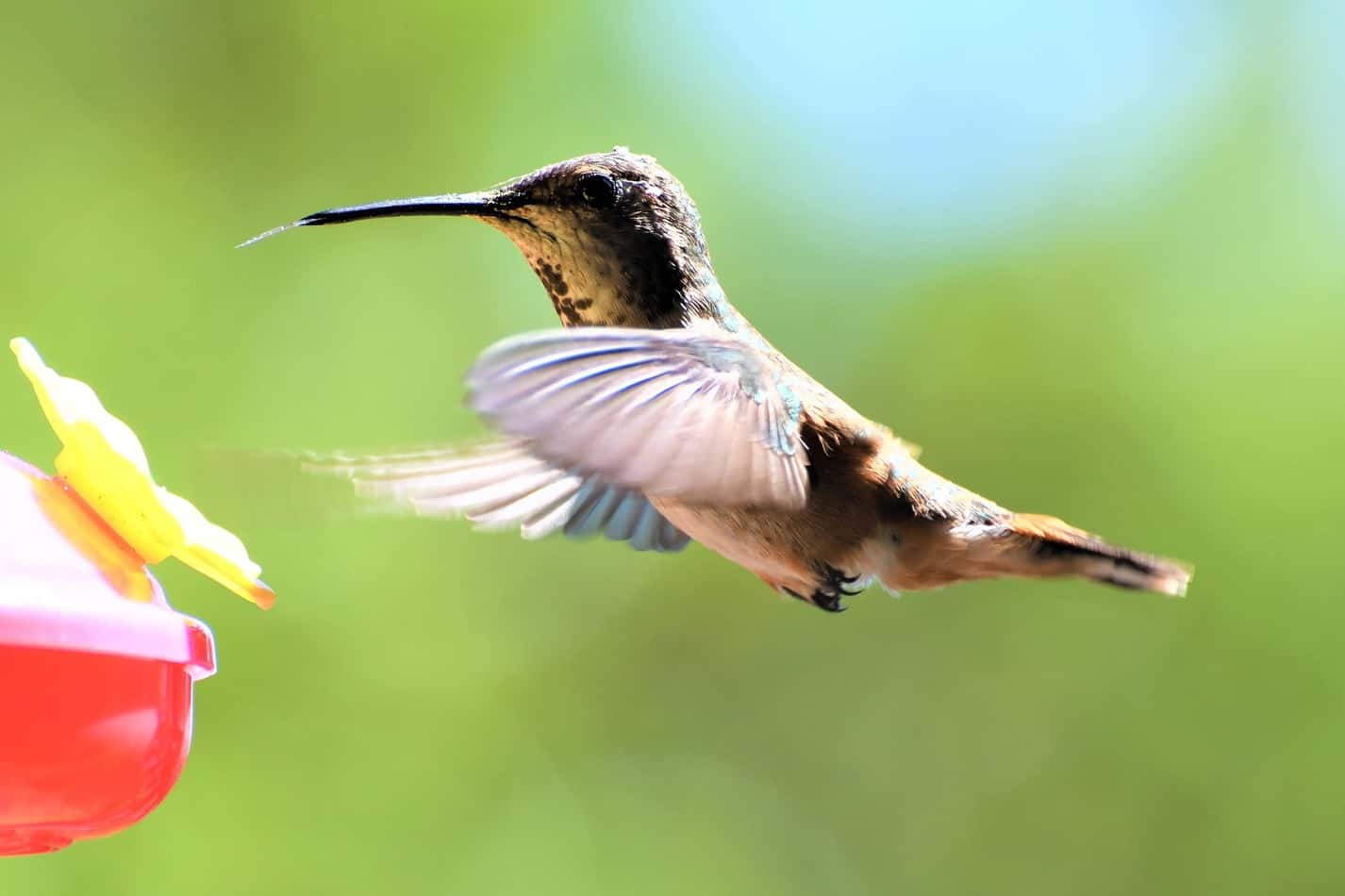Use these easy tips to attract more hummingbirds and other pollinators to your backyard. Every gardener or homesteader knows the value of having good pollinators visit your plants. Pollination is critically important in the production of the fruits and vegetables we eat, as well as in the production of seeds that will create more plants. This article gives several tips on how to attract more hummingbirds, and other good pollinating insects such as bees and butterflies, to your yard or garden.
Why Pollination Matters
Pollination begins with the flower, or blossom of any plant, which contains stamen (the male part of the flower) that produce pollen, and a female part called the pistil. For pollination to occur, the stamen must be transferred to the pistil (containing the stigma, style, and ovary). In other words, pollination is the process by which pollen is transferred to the female reproductive organs of a plant and enables fertilization.
Did you know that 1/3 of all agriculture in the United States is dependent upon pollinators?
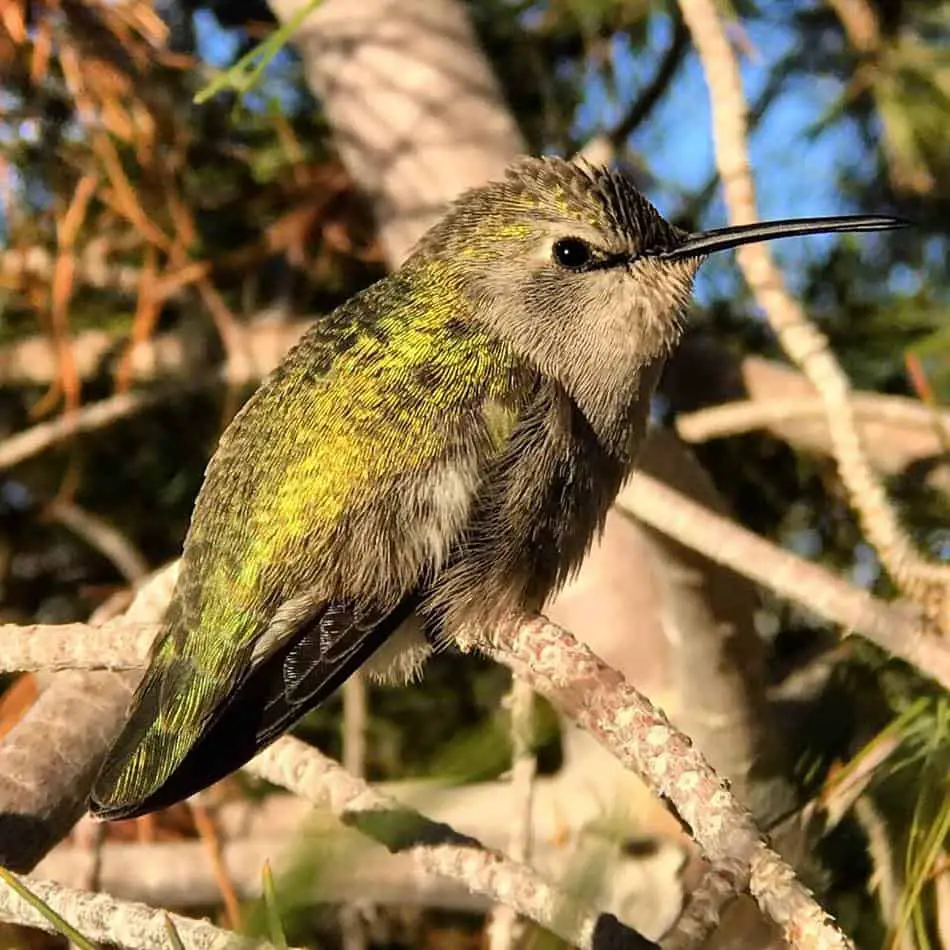
Photo credit Donna Silva
Hummingbirds are excellent pollinators
As hummingbirds feed on the nectar of a flower, their little forehead rubs against the stamens and pistils of the flower, and collects pollen. Then, as the hummingbird moves on from flower to flower, it pollinates as it goes.
There are over 300 different species of hummingbirds in the world, most of which are located in the western hemisphere. The bee hummingbird, at about 2.25 inches long, and weighing .07 ounces, is the smallest bird in the world.
Hummingbirds feed during the daylight hours on the nectar of flowers, (including perennials, annuals, shrubs, and trees). They can eat the nectar from a perched position or while hovering mid-air. Hummingbirds also eat insects, such as gnats or small flies, like fruit flies, and will also eat tree sap when they can find it. They obtain tree sap from sap wells drilled in trees by hole-drilling birds and insects.
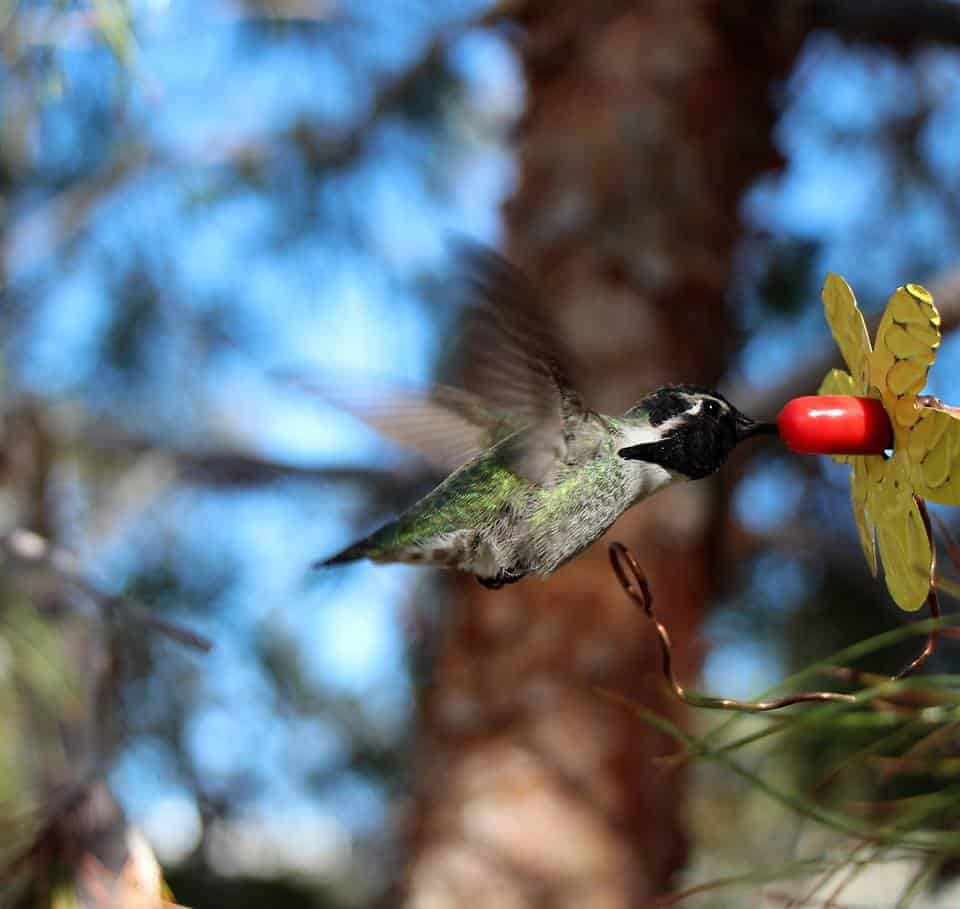
Photo credit Donna Silva
Is it okay to feed hummingbirds sugar?
Some folks argue that feeding hummingbirds interrupts the natural balance of the ecosystem and alters the environment, allowing more aggressive feeders to thrive. We do not share this mindset. And, while our first recommendation to bring pollinators to your yard or garden involves planting flowers that will provide good natural nectar sources, we also feel strongly that these birds can benefit from having a nectar substitute provided through the use of hummingbird feeders.
Here are a few ideas you can easily implement in your own yard to attract more pollinators, and especially hummingbirds.
1. Keep plant species that that have different blooming periods.
By keeping a good variety of plants in your garden and greenhouse that will bloom at different times of the year, you will ensure a good nectar source for pollinators year round. For example, You can keep window baskets of early bloom flowers such as Pansies, Snapdragons, or Violets that will pop out in early spring, as well as pots of fast growing Shasta Daisy’s Lavender, or Black-eyed Susan’s for more mid-summer flowers. Then, keep a spot in your yard filled with Chrysanthemum’s, Pansies, Aster, or Celosia for fall bloom. And, believe it or not, depending on your climate, there are even some flowers that you may be able to get to bloom during the winter—especially if you have a greenhouse. Try some English primrose, Winter Jasmine, or Hellebore. By having flowers in bloom all year, you will have a food source available for local or migrating hummingbirds.
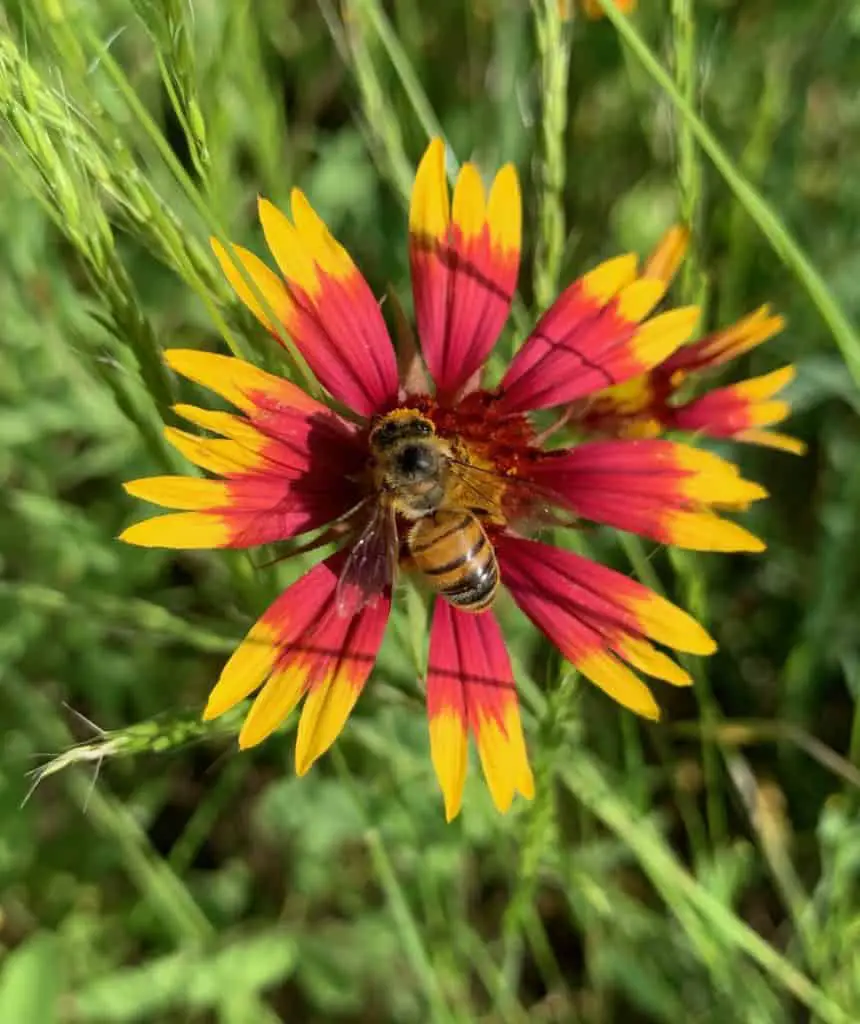
2. Tie bright colored orange, red, or yellow ribbon to your fence or trees.
When migrating hummingbirds pass over your yard and see the bright colors, they will drop in for a closer look. Once there, they will view your assortment of planted flowers and stay for a meal. Better yet, they may decide to stay for the season.
3. Buy good quality hummingbird feeders, and get rid of broken or dilapidated ones.
There are plenty of choices when it comes to buying bird feeders. If you are interested in creating an environment that consistently attracts hummingbirds, you will want a sturdy model that is designed to withstand easy and often filling and cleaning. The substitute hummingbird feeder water will attract other bugs and insects, so you will want to keep it clean, often requiring daily or alternate day cleaning. We particularly prefer a feeder style that has the nectar ports above the liquid reservoir. This will avoid dripping, which attracts bugs and ants. We recommend the Perky Pet feeder, found here. We highly recommend this model, or a similar make, as it has a moat that keeps ants out, holds up to 30 ounces of nectar, and is easy to fill and clean.
4. Use a good Hummingbird food recipe.
Do not use the red-dye hummingbird “food” sold in some lawn and garden stores! Studies done at Utah State University in Logan Utah, have suggested that these types of products can cause harm to the birds.
Instead, use a simple mix of sugar and water. We use refined white sugar and well water for our hummingbird feeders. We simply mix 1 part sugar with 4 parts water (for example, 1 cup sugar with 4 cups water), and stir until the sugar is dissolved. Then, fill your feeder and set it outside in your chosen location. There is no need to put food coloring in the water, as the feeders themselves are already attractive to the birds. Also, if your solution is attracting too many bees, simply dilute the sugar with another cup of water, at a 1:5 ratio. Also, use cane sugar if possible, although beet sugar is fine as well. DO NOT USE RAW, POWDERED, OR ORGANIC SUGAR. These sugars contain starches, and unrefined molasses/iron which is toxic to hummingbirds. Similarly, DO NOT USE HONEY in your hummingbird feeders, as raw honey (unpasteurized) will ferment when mixed with water and can cause yeast to grow, and then a bacteria that is deadly to hummingbirds.
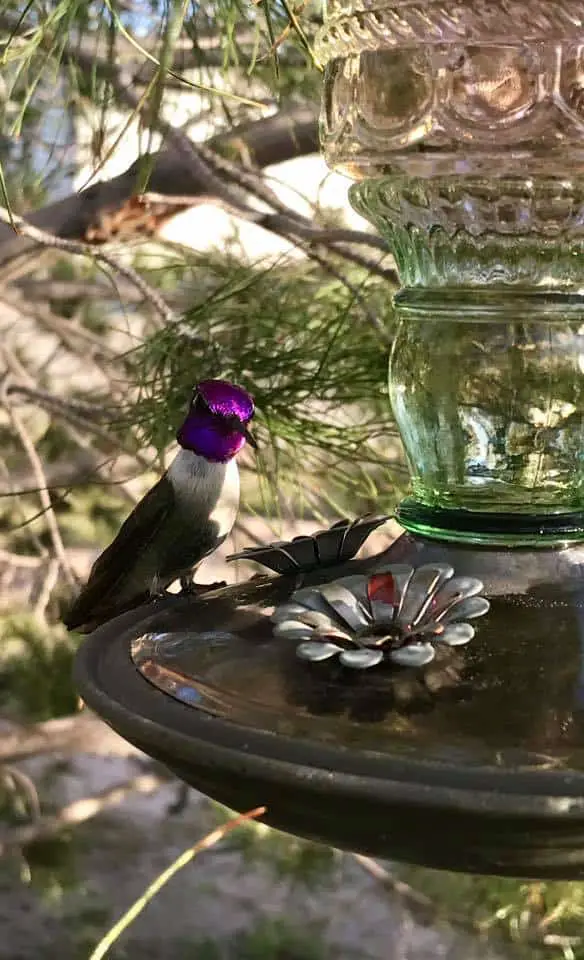
Photo credit Donna Silva
5. Place the hummingbird feeders in a safe and strategic location.
You will want to hang your hummingbird feeder in a place where cats or other predators will not be able to reach. Even if you do not have a cat, be aware that feral or other outdoor cats will hunt near your bird feeders. I’ll never forget the day we were sitting on the back deck of our family mountain cabin watching the hummingbirds enjoying a meal at the feeder we had placed near the edge of our garden. The feeder was hanging from a low lying ornamental bird feeder pole we had purchased the week prior. Without warning, a feral cat who had been hiding in the bushes jumped out and snatched a humming bird from her perch while she was feeding. We felt horrible! Needless to say, we relocated our hummingbird feeder to a much safer location.
If you happen to have a controlling and bullying male hummingbird who monopolizes your hummingbird feeder, you can avoid this issue by hanging several feeders in the vicinity of the first feeder. This will attract multiple hummingbirds, and decrease instances of territorial bullies.
6. Add a mister or misting sprinklers to your yard.
Butterflies, bees, and hummingbirds all love misters. While bees and butterflies will appreciate the light water it will leave on plants, hummingbirds love to fly straight through the fine mist created by a mister or misting sprinkler. They do this in much the same way other bird species will use a bird bath. As a child, I remember watching hummingbirds fly through the underside of our family’s mist sprinkler on the side of our home. The mist sprinklers would come on each evening at about five or six o’clock, and almost instantaneously, the hummingbirds would start dipping and flying through the mist. I took great delight in watching this behavior as a child.
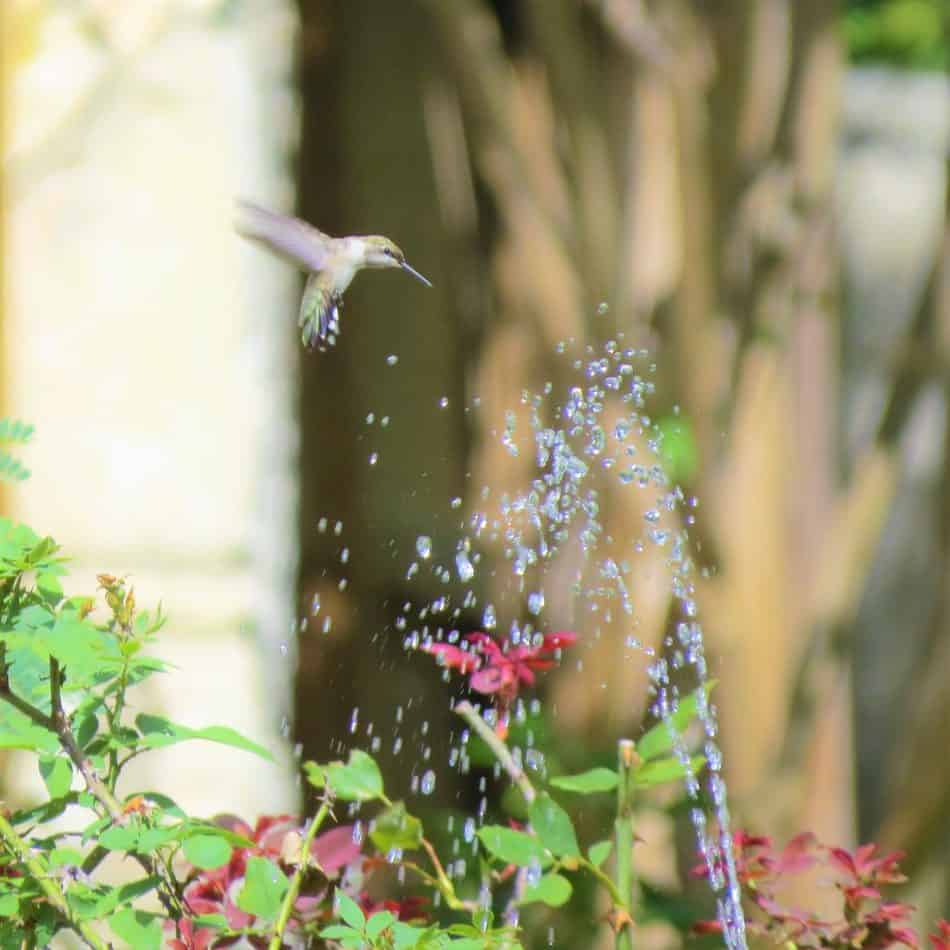
We highly recommend just buying a simple mister like this one that will attach to your standard garden hose, and is made of brass, so it will not rust or break easily. That way, you can use it to mist your delicate spring or mid-summer flowers as well as attract bees, butterflies, and hummingbirds, and simply remove it when you need the hose for other projects.
7. Provide a water source other than a hummingbird feeder
All living creatures, including bees, hummingbirds, butterflies, and need water to survive. By creating a shallow bath, or pool in your yard. Other pollinators bumblebees, ladybugs, wasps, and butterflies will have a source to sip from.
8. Allow your herb garden to bloom
Once you have harvested your herb garden, allow them to keep growing and bloom. The pollinators on our homestead absolutely mob our basil, dill, and rosemary blooms. By allowing your herb garden to continue growing, it will take on a second life for hungry bees, butterflies, and hummingbirds.
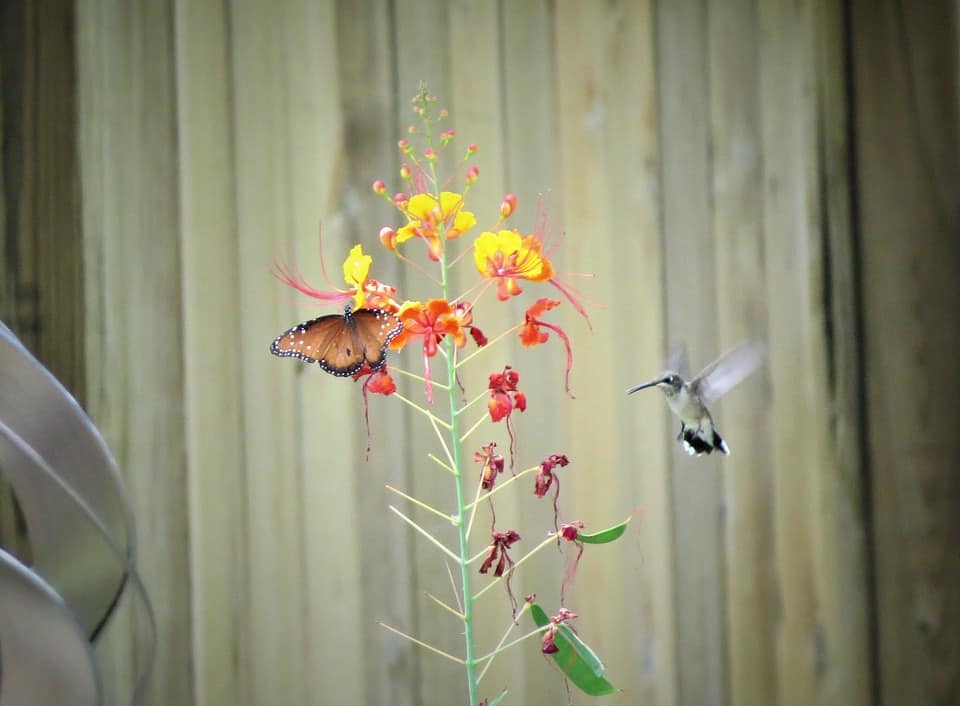
9. Need to keep other birds off of your feeders?
Tired of having other birds steal from your hummingbird feeder? Just clip off the perches. While hummingbirds can feed while hovering, other birds can’t. So, by eliminating their seat, the other birds won’t be able to sit and steal the sweet sugar water from your hummingbirds.
10. Use beneficial insects instead of pesticides.
We have touted the benefits of natural pest control such as ladybugs, praying mantis, or predator wasps before, and we will do it again here. Unless your use of pesticides is done very carefully, you risk hurting your most precious pollinators. So, if you are worried about insect pests and or weeds, look into options other than pesticides. Also, read this helpful article I wrote about alternatives to pesticides.
In summary, there are several easy measures you can use to attract pollinators to your yard. By taking a few simple but thoughtful steps, you can make your yard a bountiful haven for precious pollinators, and do mother nature a great favor. At the same time, you will enjoy watching these pollinators harvest food from your backyard landscape.

